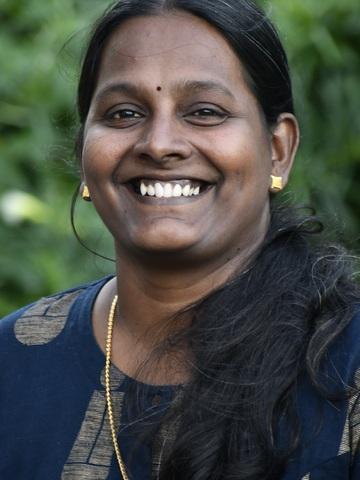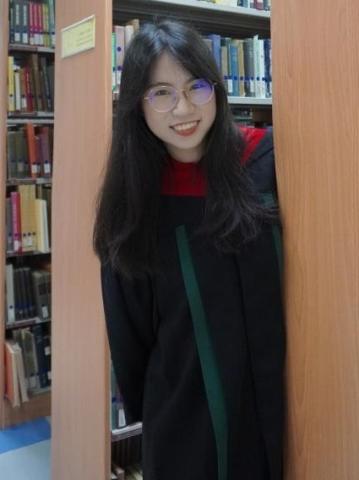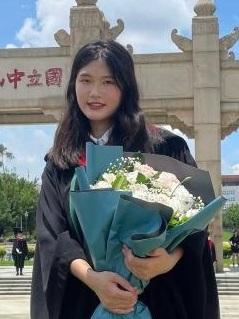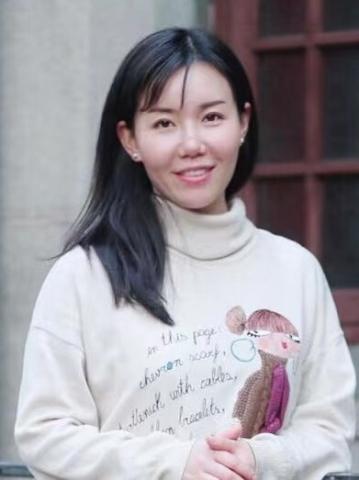
IAMCR is pleased to announce the winners of the 2024 Annabelle Sreberny Memorial Award. Three outstanding papers have been selected:
- Anti caste discourses on Social Media: A Critical Analysis of the Dalit Women Activism on Social Media
Ratnamala Vanamamalai and Anantha Raman Perumal from Mizoram University, India
- From “Tales of Bliss” to “Myths of Miss”: The Impact of SNS on Marriage Perceptions within Chinese Culture—A Qualitative Inquiry into the Life Narratives of 14 Marriage-Free Women
Yangjiadi Liu, Xiaoyan Fu, Maggie Qin and Chuanyu Li from Sun Yat-sen University, China
- Digital Threats or Opportunities? Navigating the Tension between Suzhou Embroidery’s Tradition and Modern Popular Culture in the Digital Age
Boyuan Wang and Yifei Li from the School of Media and Communication, Shanghai Jiao Tong University, China
The award will be formally presented at a special session to be held on 3 July during the main IAMCR 2024 conference in Christchurch.

P. Anantha Raman
P. Anantha Raman is a research scholar in Mizoram University.
Completed MA and M.Phil in Manonmaniam Sundaranar University now pursuing PhD in Mizoram University. Area of Interest is Social media and Inequality, Caste discrimination in New media.

Vanamamalai Ratnamala
Prof. V.Ratnamala is a Professor & Head in the Department of
Mass Communication, Mizoram University, Aizawl, Mizoram, India. She was a Visiting Fellow at Institute for Comparative Modernities, Cornell University, Ithaca, New York during Feb-May 2020. Her research interests include caste and communication, media and Minorities, race, space and the city, and Media and indigeneity.
Abstract
Anti caste discourses on Social Media: A Critical Analysis of the Dalit Women Activism on Social Media
The caste system in India is a hierarchical social structure that is mostly based on the hereditary transmission of occupations from one generation to another. An individual's status in society is largely determined by their caste at birth. Even in contemporary times, people are still classified and grouped according to this persistent social framework. Within the lowest castes, a notable portion continues to struggle with illiteracy, lacking essential understanding of where to find assistance or direction. As a result, people frequently find themselves in difficult and disadvantaged situations, unsure about how to navigate the intricacies of the modern world. Amidst these hurdles, Dalit activists shine as guiding lights.
Their resolute commitment plays a crucial part in tackling the challenges experienced by those from lower castes, as they endeavor to combat the enduring systemic inequities in society. These activists serve as catalysts for promoting positive change through their unwavering dedication. They provide essential assistance to persons who are often excluded, ensuring that their problems are recognized and brought to a wider public audience. The objective of this ongoing study is to perform a meticulous evaluation of how Dalit women activists in India utilize the social networking platform X, primarily X, to promote and support the rights and advancement of the Dalit group. The study aims to investigate the active involvement of these activists in discussions and debates pertaining to the eradication of caste, also known as caste annihilation. Moreover, it examines how Dalit activists employ the platform to cultivate unity in the face of the deplorable caste discrimination they experience on a daily basis. This study utilizes Critical Caste Theory as its theoretical framework to examine the phenomena of Dalit activism on social media. The researchers employed the Netnography technique to perform online fieldwork, specifically targeting the observation of individuals in the virtual domain. Data was collected via platform X, focusing on acquiring archival data by analyzing pre-existing interactions rather than participating in direct online chats with the community. Utilizing Python software (Gunawan et al., 2020), we extracted tweets from the Dalit women activist X platform on December 22, 2023. The research focused on nine Dalit women activists, both within and outside India and a total of 7191 tweets were collected for analysis. Following the compilation of these tweets, a dataset was created to amalgamate all posts into a single file. Subsequently, a word cloud (Figure 1) was generated using a Python application to discern the most frequently used words within the dataset. To conduct a thorough manual qualitative analysis of the tweets, a sampling approach was employed to reduce the sample size.
Initially, the AntConc tool (Anthony, 2022) was employed to extract the random tweets in the dataset. From this pool, 500 random comments were generated using AntConc and transferred to a Microsoft Excel sheet for meticulous manual qualitative analysis. For the incorporation of time series analysis, the researchers utilized Inforgram (https://infogram.com/) to identify active Dalit women activists. The Dalit woman activist X account highlights the major themes that were addressed. The topics of discussion include the allocation of funds for Dalit communities, representation and leadership within the Dalit community, the Reservation Bill, the history and achievements of Dalits, justice and advocacy for Dalits, caste-based violence and discrimination, international solidarity and collaboration on Dalit issues, challenges faced by Dalits during natural disasters, political commentary on Dalit issues, and the impact of social media and misrepresentation on the Dalit community. Topics covered include the resolution on caste equity in Seattle, the launch and reviews of a book, media image and representation, calls for justice and action, community misogyny, identity and activism, intersectionality, and LGBTQ+ issues.
Primarily, the points may be categorised into three distinct ways: discrimination, opposition, and representation. The analysis focuses on the examination of misogyny prevalent in communities, highlighting the role of intersecting forms of discrimination based on both caste and gender in perpetuating the subjugation of women within these communities. Within the current societal context, Dalit women activists are seen to be significant accelerators for transformation, since they play a crucial part in challenging and destroying long-established systems of caste-based prejudice. In contrast to previous eras, these activists are not passive victims of injustice; instead, they actively engage in debate, advocacy, and intellectual engagement. The notable characteristic of these Dalit women activists is their proactive strategy in spreading information and increasing awareness about the many aspects of caste-based oppression against women.
The Award Committee shared the following statement regarding Anantha and Vanamamalai's paper:
The subject and focus resonates with Annabelle Sreberny’s interest as it brings together (social) media, forms of resistance at the intersection between discriminated Dalit people and women's mobilizing through platforms against GBV. The paper includes encompassing diverse, marginalized groups with pivotal roles played by social media. The work brings elements of novelty in relation to how social media can contribute to addressing discrimination against Dalit women and other marginalized subjects.
This paper was accepted for presentation by the Gender and Communication Section.
Presentation date and time: 1 July at 16:00
Room: Bealey 5 - Te Pae Convention Centre

Liu Yangjiadi
Liu Yangjiadi is a master candidate at the School of Journalism and Communication, Sun Yat-Sen University, Guangzhou, China (510275), specializing in Cultural Studies and Gender Studies.

Qin Guimei
Qin Guimei is a master candidate at the School of Journalism and Communication, Sun Yat-Sen University, Guangzhou, China (510275), specializing in New Media Marketing and Influencer Marketing.

Li Chuanyu
Li Chuanyu is a master candidate at the School of Journalism and Communication, Sun Yat-Sen University, Guangzhou, China (510275), specializing in Consumer Psychology.

Fu Xiaoyan
Fu Xiaoyan is an associate professor at the School of Journalism and Communication, Sun Yat-Sen University, Guangzhou, China (510275), specializing in Youth and Media, and New Media Literacy.
Abstract
From “Tales of Bliss” to “Myths of Miss”: The Impact of SNS on Marriage Perceptions within Chinese Culture—A Qualitative Inquiry into the Life Narratives of 14 Marriage-Free Women
The rapid expansion of the internet has significantly transformed the dynamics of female identity and gender discourse within public domains in China. In this evolving digital landscape, social media platforms have become arenas for the contestation and propagation of feminist ideologies, catalyzing a shift towards narratives that reject traditional paths of marriage and childbirth. This has nurtured a vibrant discourse and fostered community engagement around feminist stances.
Despite the visible impact of these movements, there remains a dearth of scholarly investigation into how mediatization through emerging media technologies is reshaping the perspectives on romance and marriage, particularly among Generation Z women. A critical gap exists in comprehending the extent to which the pervasive culture of women’s social media, established as a structural entity since 2010, has been instrumental in redefining women’s lived experiences on a global scale.
This study is anchored in the theoretical framework of meaning construction, utilizing life narrative interviews and thematic analysis to delve into the lived experiences of 14 marriage-free women. It explores the notion that the decision to remain unmarried is not static but is influenced by a complex interplay of personal narratives, media interactions, and societal factors. The use of life narratives as a methodological approach enables a deep and nuanced exploration of participants' experiences, aligning with the research’s objectives. Participants were purposively sampled through open calls on platforms such as Weibo and Douban, ensuring a diverse cohort across various demographics, professions, and educational backgrounds, ages 21 to 41, to capture a wide range of perspectives on marital decision-making.
The research uncovers that emerging media are deeply embedded in the lives of modern Chinese women, profoundly shaping their views on love, marriage, and procreation. It identifies a collective disdain for traditional patriarchal norms, uniting these women in solidarity. Social media has become a pivotal platform for articulating a "high-quality single" lifestyle, challenging societal norms around "single shaming" and the pressure to marry. The decline of the "Simp Economy" and the emergence of the "She Economy" and "He Economy" signal a shift towards consumerism that prioritizes self-gratification, intensifying gender dichotomies and reducing the allure of traditional matrimonial and familial roles.
Ultimately, this study sheds light on the significant role of sns in transforming the perspectives of contemporary Chinese women towards marriage and singleness. It highlights the complexities of navigating gender norms and expectations in a digital era, marking a notable shift towards individualism and autonomy against the backdrop of conventional matrimonial values.
Announcing its decision the Selection Committee, said:
The subject resonates with Annabelle Sreberny’s interest in posing attention to women’s empowerment in a context of transforming communication ecosystem. It explores how emerging media technologies reshape the marriage and love views from a mediatised perspective, and presents an interesting discussion on "the transition from the traditional era of communication to the digital era" acknowledging " the way audiences perceive the external world (which) has shifted from offline interactions to online ones”.
This paper was accepted for presentation by the Mediated Communication, Public Opinion, and Society Section.
Presentation date and time: 2 July at 8:30
Room: Bealey 3 - Te Pae Convention Centre

Boyuan Wang
Boyuan Wang is a PhD candidate at School of Media and Communication, Shanghai Jiao Tong University. Her primary research interests lie in cultural communication, new media and society, media psychology, and human-machine communication. She holds a BA in International Communication Studies at University of Nottingham and a MA in Digital Assets and Media Management at King’s College London.

Yifei Li
Yifei Li, PhD candidate at Shanghai Jiao Tong University, Editorial Assistant of Telematics and Informatics Reports. His main research area is culture digital communication. He has published 6 academic papers in SCI/CSSCI journals and has been invited to give presentations at 16 international academic conferences.
Abstract
Digital Threats or Opportunities? Navigating the Tension between Suzhou Embroidery’s Tradition and Modern Popular Culture in the Digital Age
The development of the market poses a significant threat to the survival and development of Su embroidery, an art form and cultural tradition with thousands of years of history, rich cultural value, and historical significance. This phenomenon not only highlights the urgency and complexity of protecting intangible cultural heritage (ICH) in the dynamic context of the global market but also emphasizes the need for innovative response strategies. In the digital era, emerging technologies such as Virtual Reality (VR), Augmented Reality (AR), and Mixed Reality (MR) have had a significant impact on the protection and dissemination of traditional culture. This study, based on a seven-year longitudinal ethnographic survey conducted in Suzhou from 2017 to 2023, delves into how digital technology affects the attitudes of Su embroidery inheritors and analyzes the impact of digital technology on the protection and promotion of Su embroidery art. Through investigations in Suzhou embroidery workshops and art colleges, as well as interviews with inheritors and industry experts, this research explores a new paradigm of digital dissemination for Chinese intangible cultural heritage, based on the dynamic transmission characteristics of living cultural heritage in the digital era. It provides new insights for empowering cultural value innovation with intelligent communication technologies.
Announcing its decision the Selection Committee, said:
The authors managed to locate their work at the intersection of digital infrastructure and cultural artifacts - embroidery. The result is a contribution to exploring the digital impact on ‘intangible cultural heritage. The subject echoes Annabelle Sreberny’s interests, particularly a concern about the uses of technologies by communities and the global/local nexus. Overall it shows new insights for empowering cultural value innovation with intelligent communication technologies.
This paper was accepted for presentation by the Popular Culture Working Group
Presentation date and time: 3 July at 8:30
Room: Conway 3 - Te Pae Convention Centre
Annabelle Sreberny Memorial Award Selection Committee
Chair: Claudia Padovani (University of Padova, Italy)
Members:
- Marjan de Bruin (University of the West Indies, Jamaica)
- Joe Khalil (Northwestern University in Qatar)
- Gholam Khiabany (Goldsmiths College, UK)
- Sandra Ristovska (University of Colorado Boulder, USA)